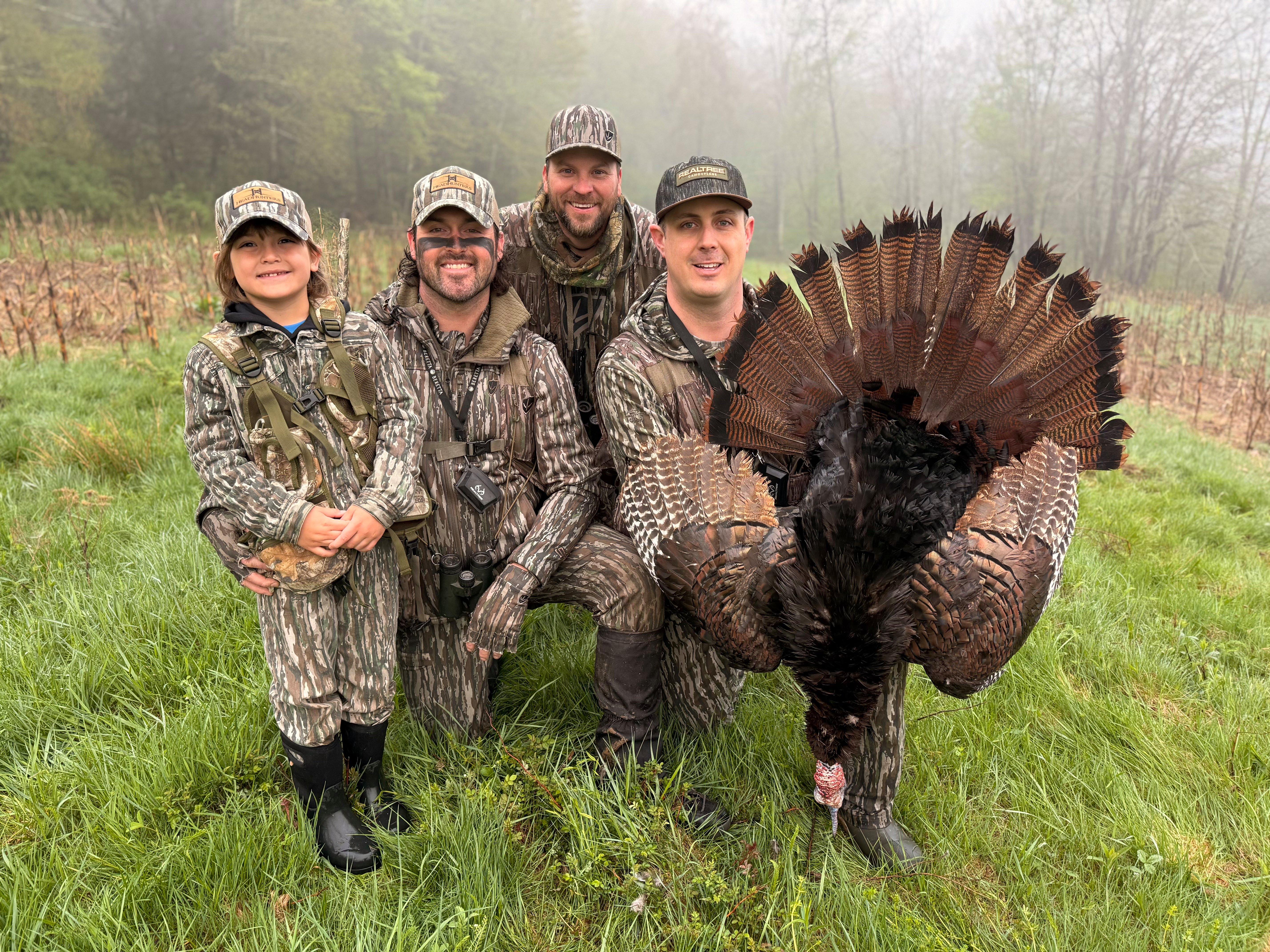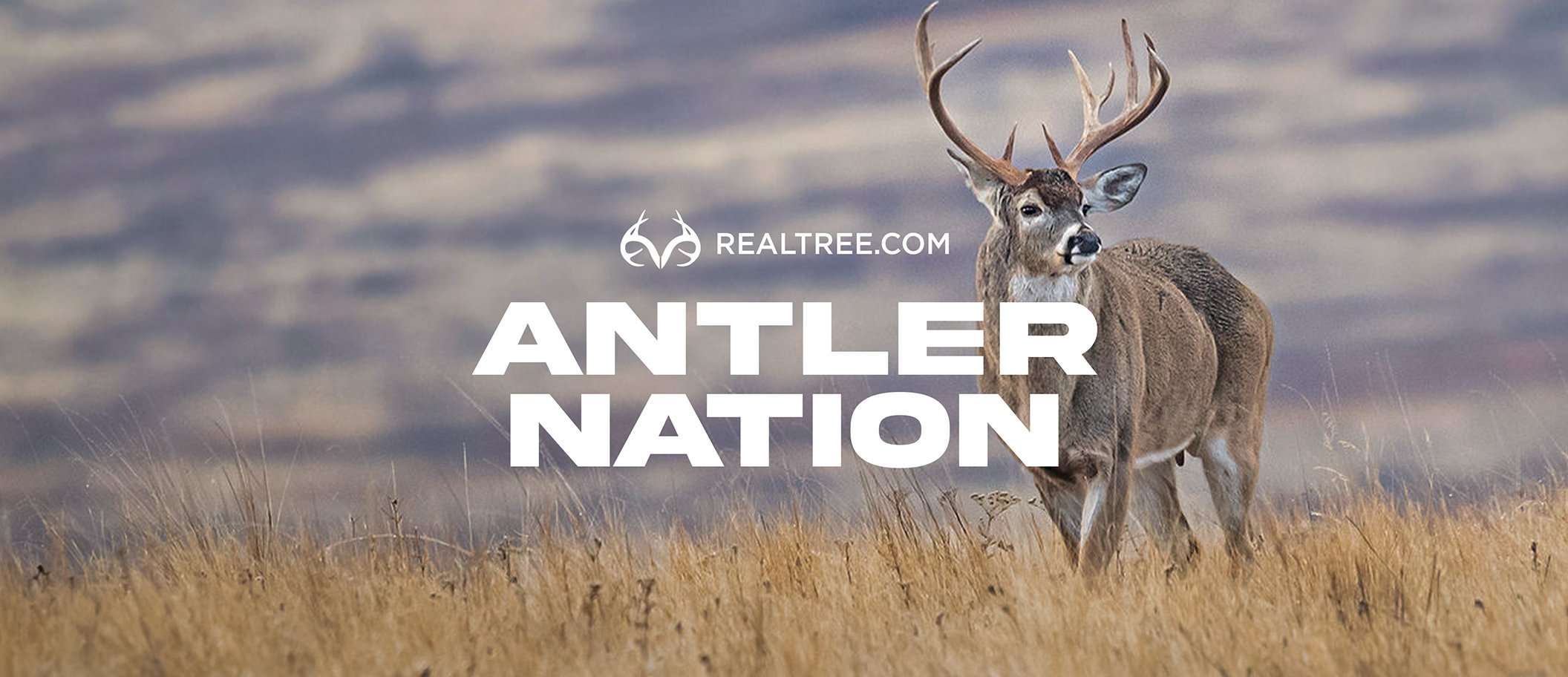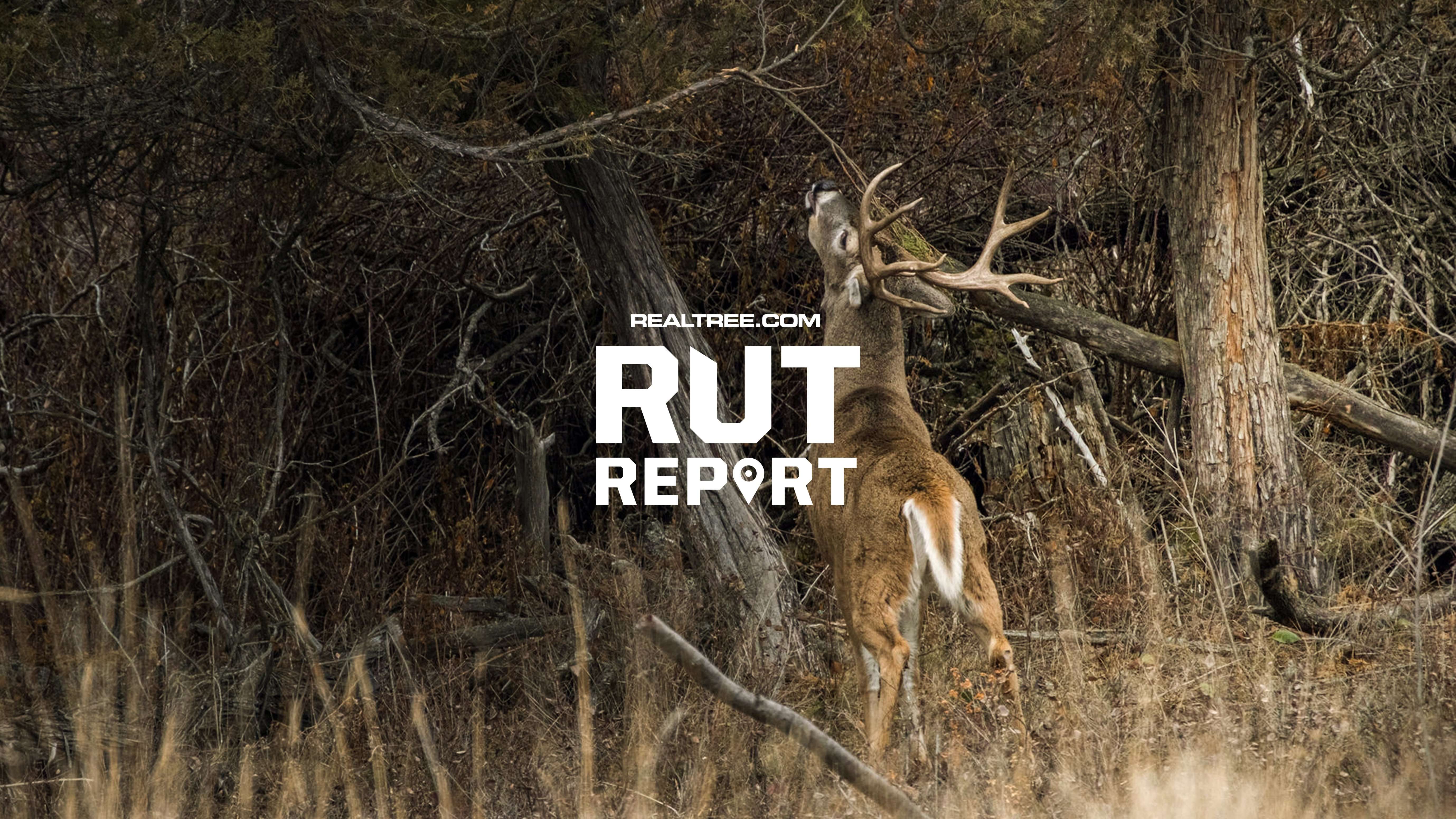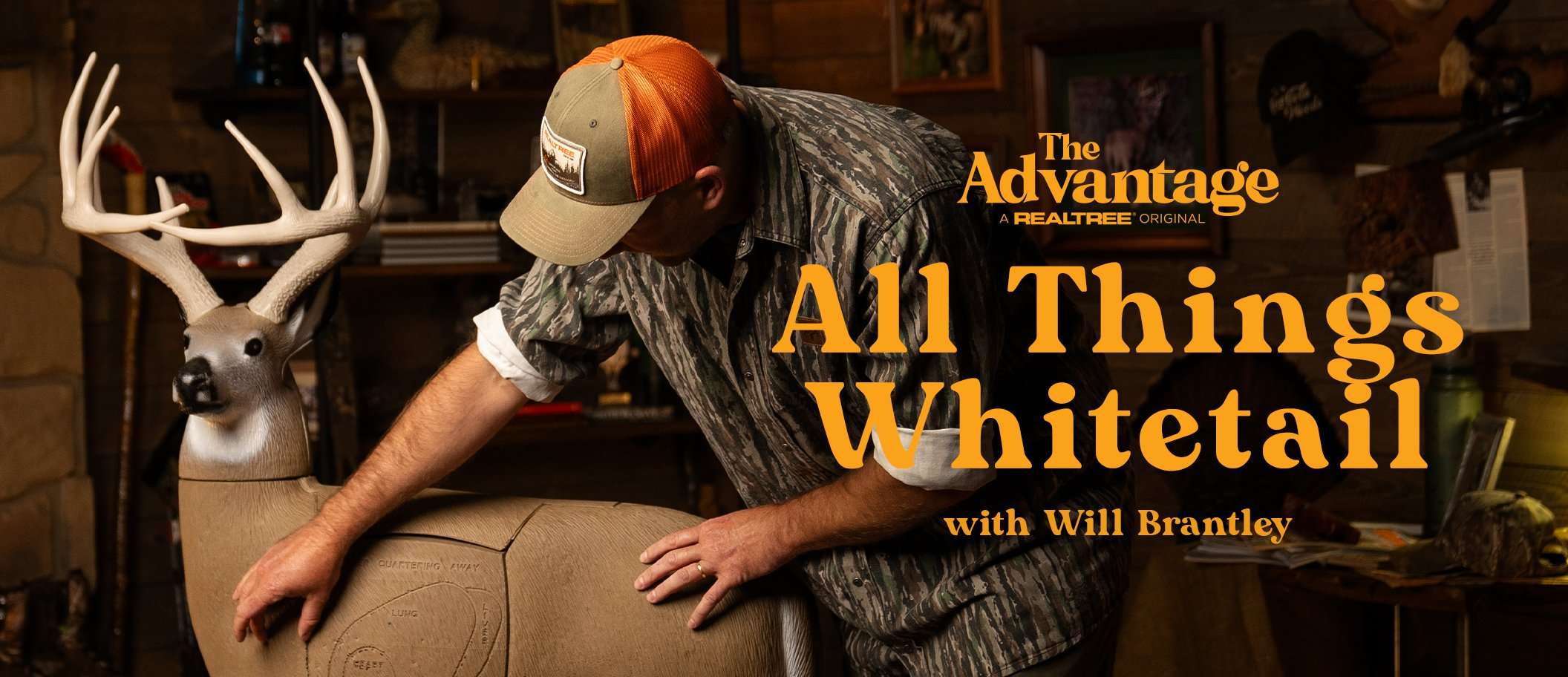Seasons are winding down across the Northern U.S., and while the woods have greened up nicely, the temperatures have cooled down. But the gobblers are still playing the game, as most hens are now nesting.
| Strut Report Details | |
|---|---|
| Strut Stage: | Peak Strut |
| Temperature: | 51 to 60 degrees |
| Precipitation: | Light Rain |
| Wind: | 20+ mph |
| Cloud Conditions: | Overcast |
| Food Sources: | Green vegetation |
| Gobbling Activity: | Gobbling hard all day |
| Strutting Field Activity: | Toms strutting together at all hours of the day |
| Hen Gobbler Activity: | Hens are on the nest, gobblers are getting lonely |
| Seen Any Poults Yet: | Not yet |

A late spring cool-down has hit many areas of the Midwest during the final leg of turkey season, but the birds are still working. Image by John Hafner
It’s hard to believe, but turkey seasons across the Northern U.S. are wrapped up or will be in a little over a week. That being said, the past week has brought on a flurry of weather patterns, including chilly temperatures, tornadoes, high winds, and even rain when the forecasts show no chances for precipitation.
Still, I enjoyed an epic hunt on my Wisconsin property last week during the state’s Time Period E. My wife heard a bird gobble the evening before my hunt, and I knew which roost trees he was headed toward. Earlier in the afternoon, I had popped up a blind 100 yards from them on a hunch that a gobbler would roost there.
I slipped in the following morning, and he began gobbling hard from the roost. I also heard other toms in several directions gobbling hard. My bird flew down and was still gobbling, but then he went quiet, gobbling only sporadically. Meanwhile, two other gobblers that roosted way off kept coming closer, so I kept calling.
They came off a freshly planted cornfield and into the timber, roaring like lions, but they circled my setup. They hung out in a clearing about 100 yards from the other gobbler. I shut off the calls, and after a hiatus, I switched to a higher-pitched mouth call. That got the original bird’s attention, and he came right into my jake and two hen decoys. I arrowed him, and he ran 30 yards and tipped over.
The other two toms heard the commotion and came in and beat up my bird, then one came and mounted my hen decoy, and then they were back to beating up my dead bird. I could have easily doubled if I had two tags. Very few toms are with hens, and those that are with one or two seem to still be receptive to calls. They’ve been called to a lot, so you might have to get creative by switching up calls, or going silent when birds are gobbling but not committing.
Dustin Decroo of Bighorn Outfitters, located in Buffalo, Wyoming, said that things are still rocking in the Cowboy State. “Our birds are still gobbling pretty much all day,” Decroo explained. “Larger decoy spreads seem to be working a little better than a single strutter or hen. I’ve seen several birds switch roosts in the previous week. The toms are moving a lot more in search of the last remaining hens to breed.”
Nate Hosie and Randy Birdsong of HeadHunters TV recently hosted Realtree’s Tyler Jordan in Pennsylvania. They found success despite crummy weather. “We’ve hunted hard and found some turkeys that have wanted to play,” Hosie told. “However, overall, I feel like it’s been a little off due to so much rain and low pressure. This has been the wettest May I can remember. Lord willing, the weather will get a bit more consistent for the rest of the season. Regardless, we’ll stay after ‘em!”

Realtree’s Tyler Jordan (right) overcame the wet conditions and scored this nice Pennsylvania gobbler while hunting with the HeadsHunters TV team. Photo courtesy of Nate Hosie.
Over the previous week, Realtree pro-staffer Anthony Virga has been kicking around the Northeast, hunting in New Jersey and also Maine. He said, “The birds are gobbling well on the limb in the morning and are with hens for a good portion of the day. Tactics for me lately for henned-up gobblers on fields or birds that have been pressured involve sitting about 30 yards from field edges. They aren’t always willing to leave the field, but they’ll cautiously come a little closer to the field edge where they’re within range.”
Back out west in Colorado, fellow outdoor writer Jace Bauserman has had quite the season, taking birds of his own and helping several others get their birds. “At elevations below 6,500 feet, the turkey rut is coming to an end,” he detailed, “and gobbling is sporadic on the roost. In the mountains, birds can be found at 7,000-9,500 feet and sometimes higher, and many of these nomadic wanderers are still roaming for hens.”
If you’re still packing a tag or two, there are lots of opportunities left to get on a receptive bird. Most gobblers are alone and gobbling hard throughout the day. Again, if you find a bird that’s gobbling but unreceptive, don’t be afraid to change up the call you’re using. It seems like most hunters are still having great success with jake and hen decoys, except in jake-dense areas such as parts of South Dakota, where the punks are beating up on lone toms, as my sister, Clair, has noticed. Melissa Bachman also reported similar observations.
The time we all wait for is coming to a close, and although I hate to see it go, preparations for August and September hunts are just around the corner. Until next year, it’s been fun bringing you the most current turkey happenings from Washington to Maine in Realtree’s Strut Report!












